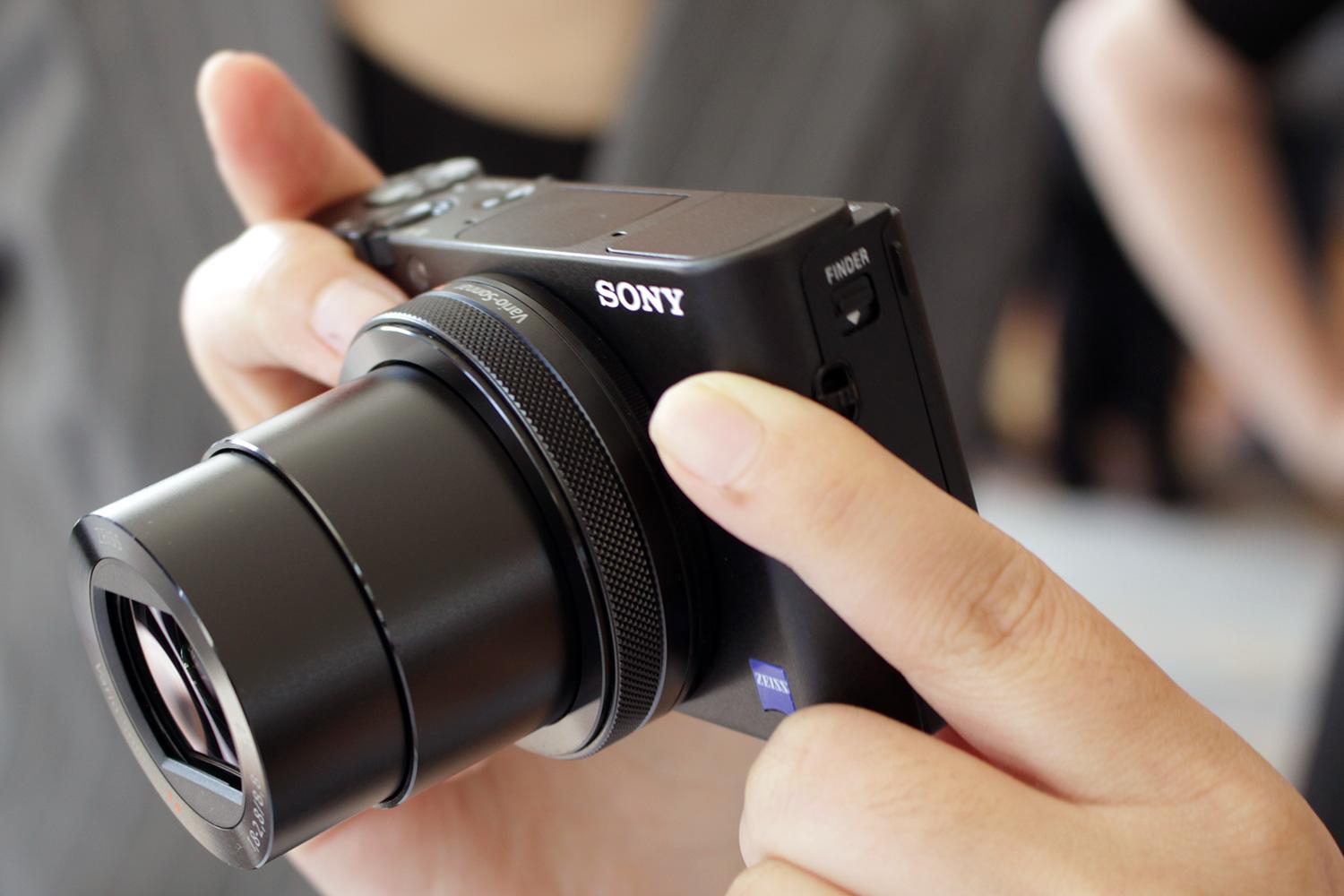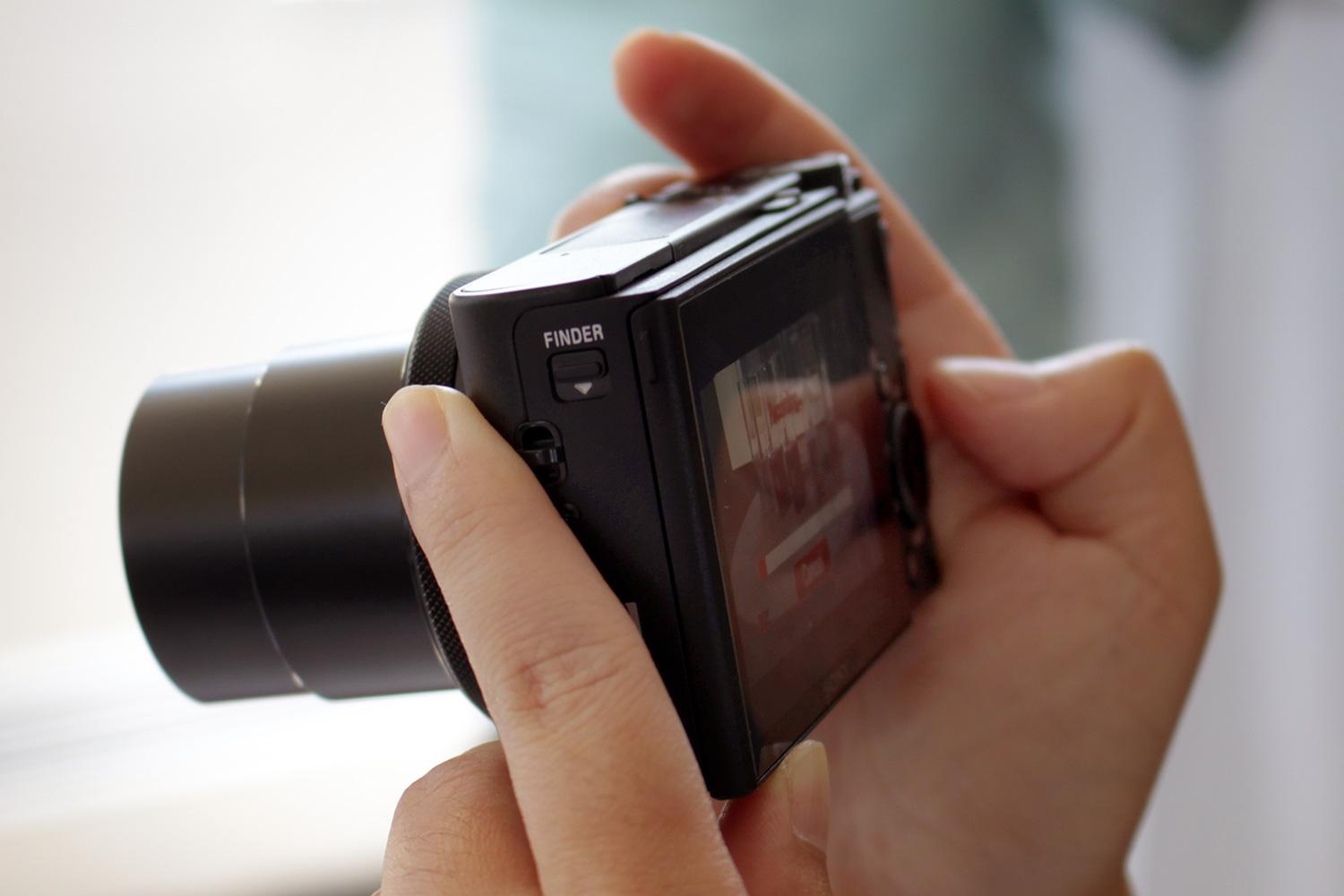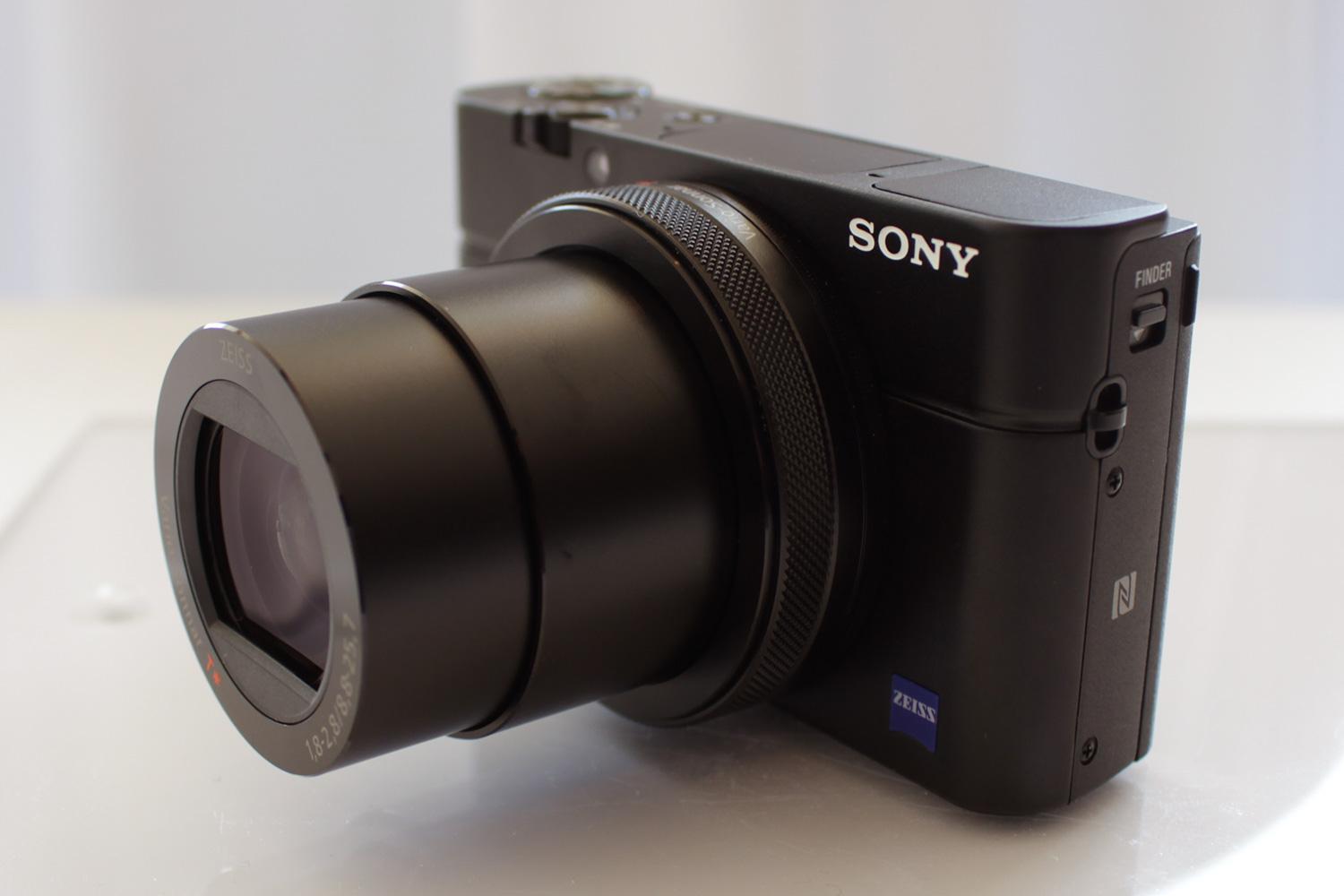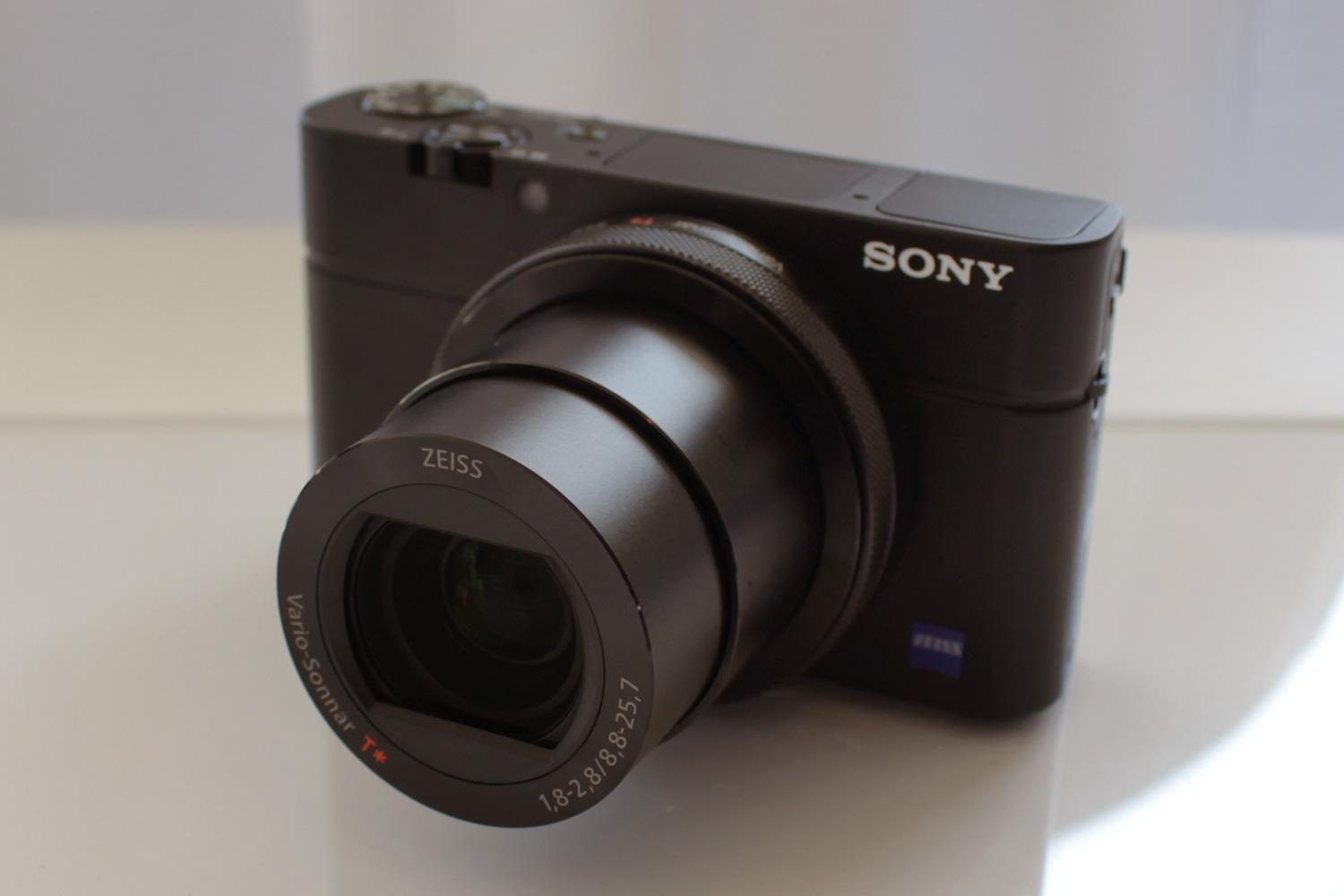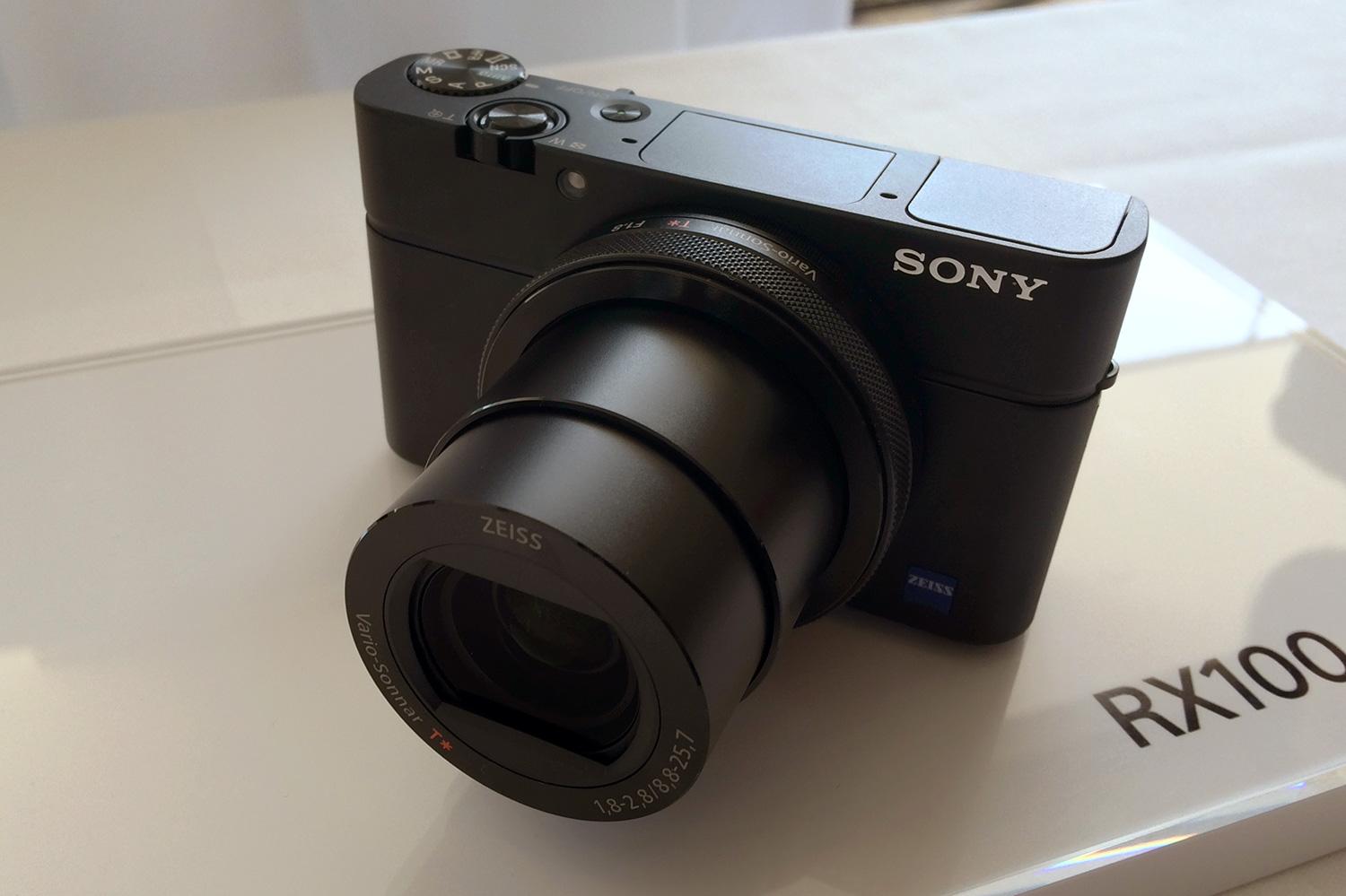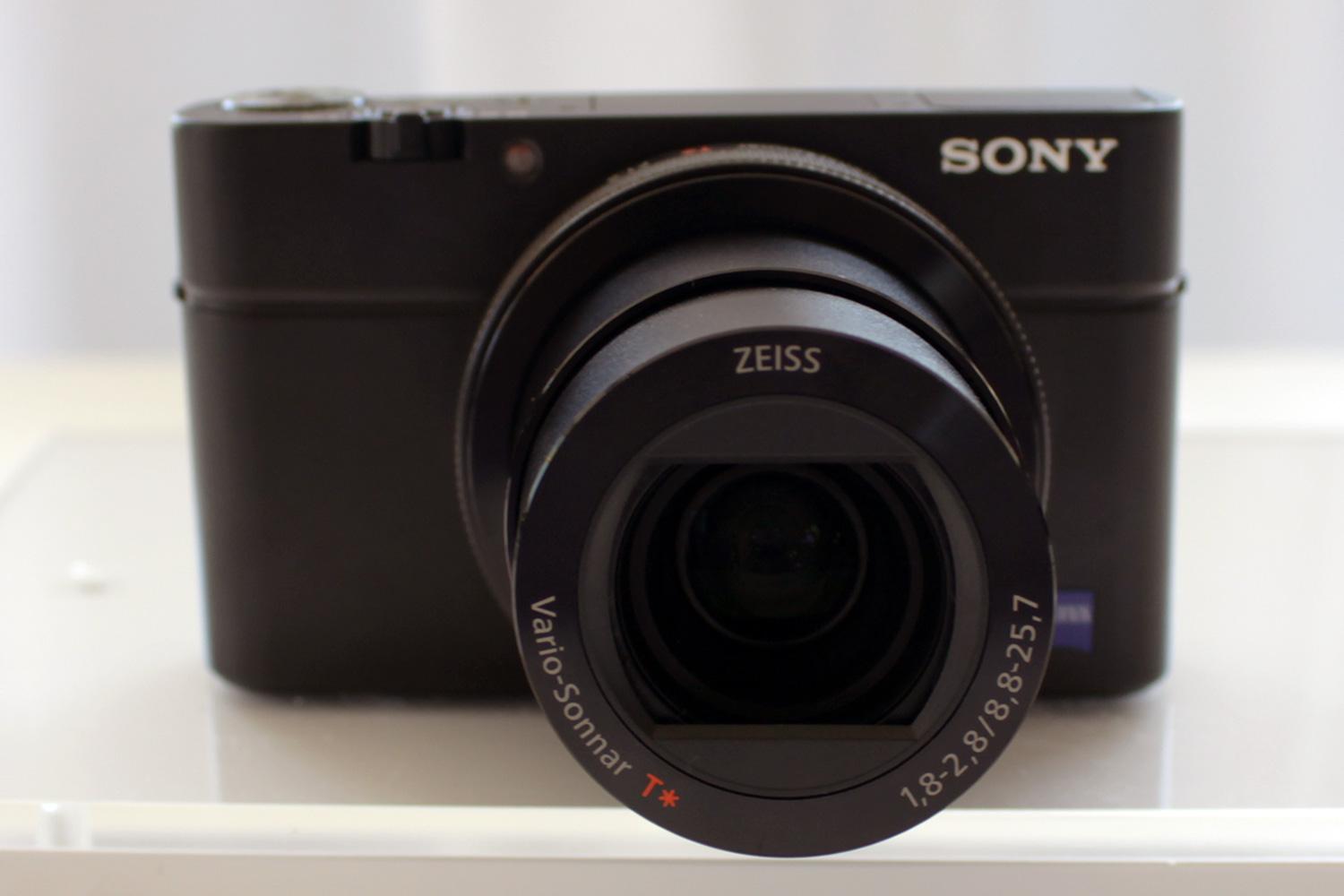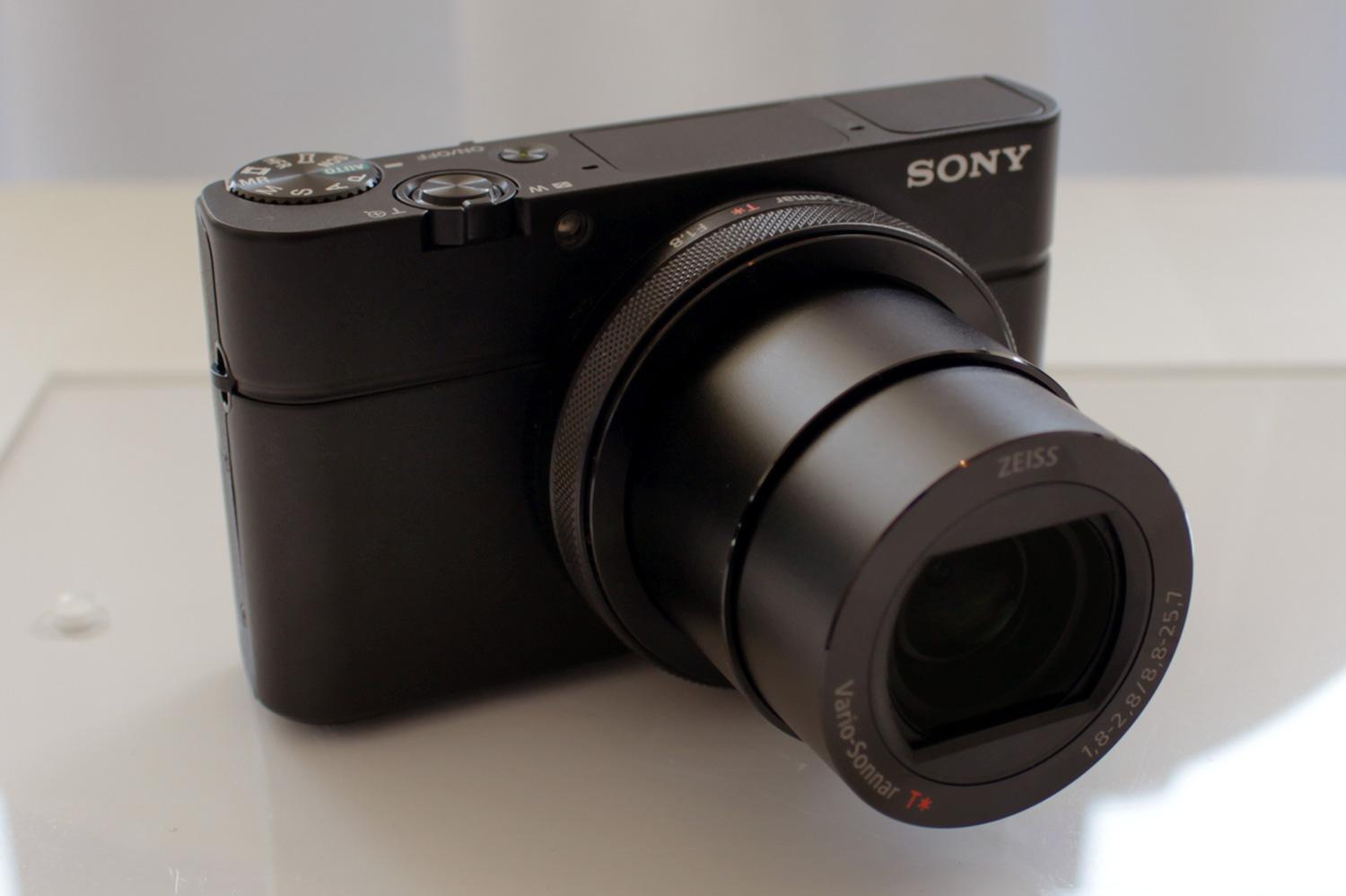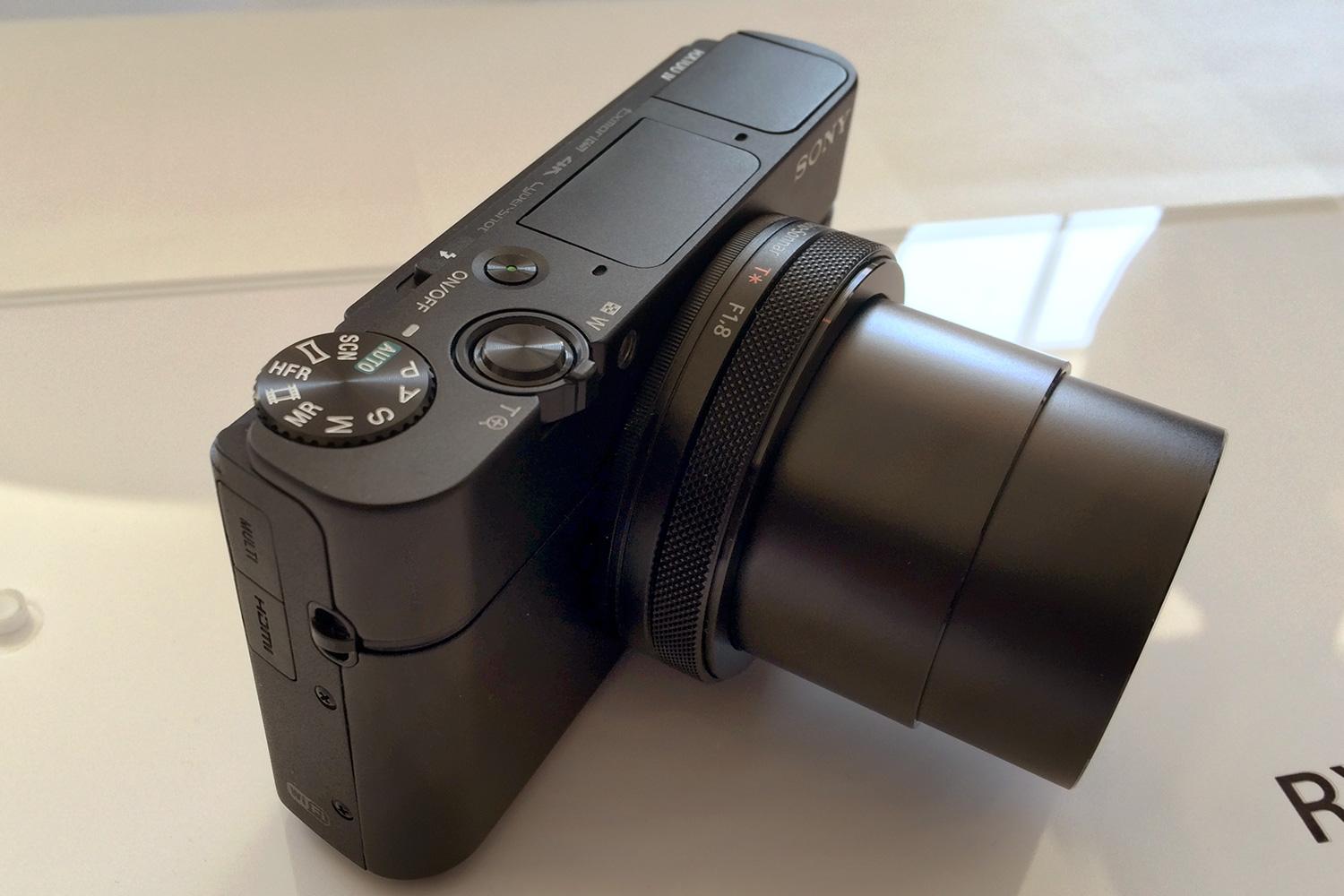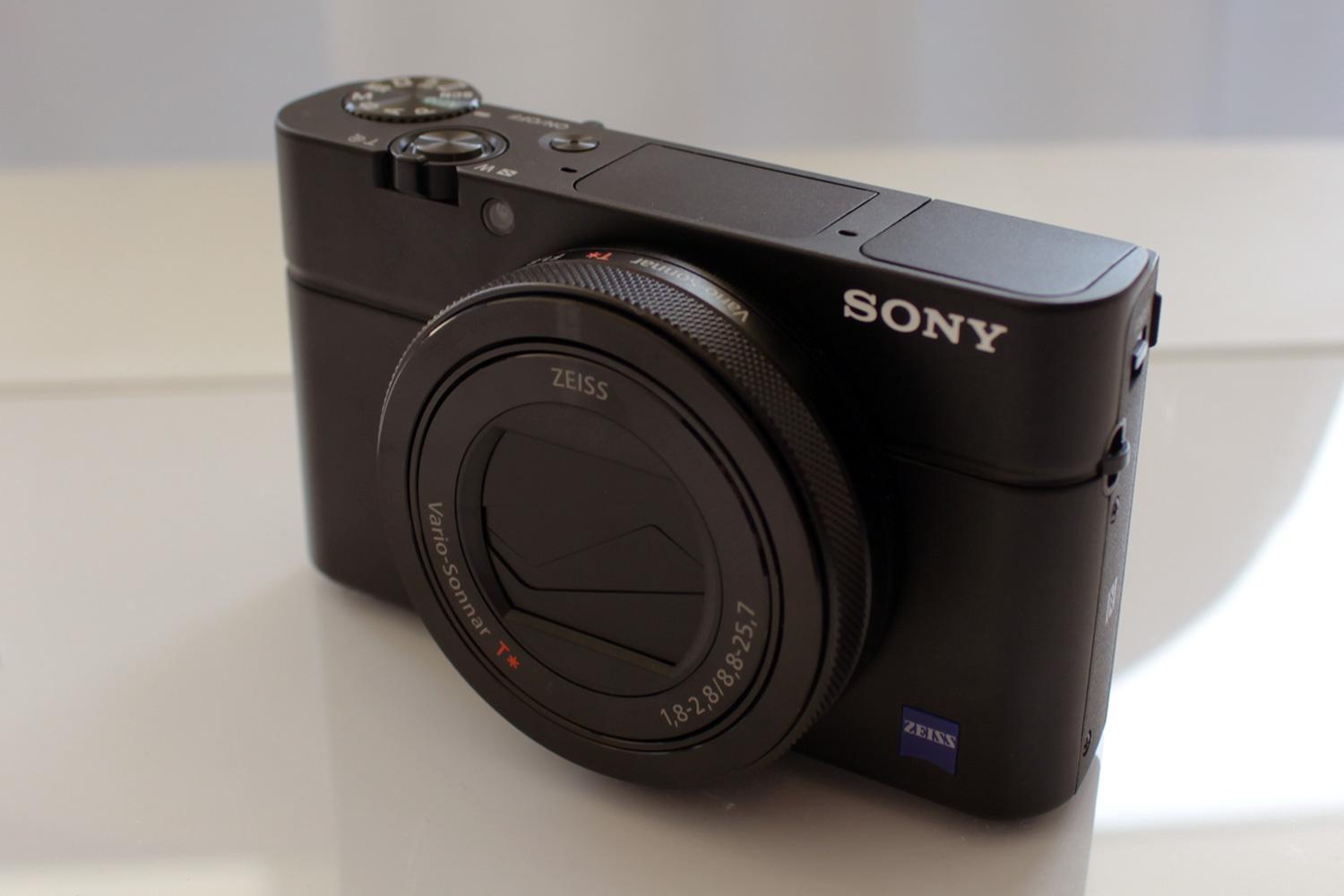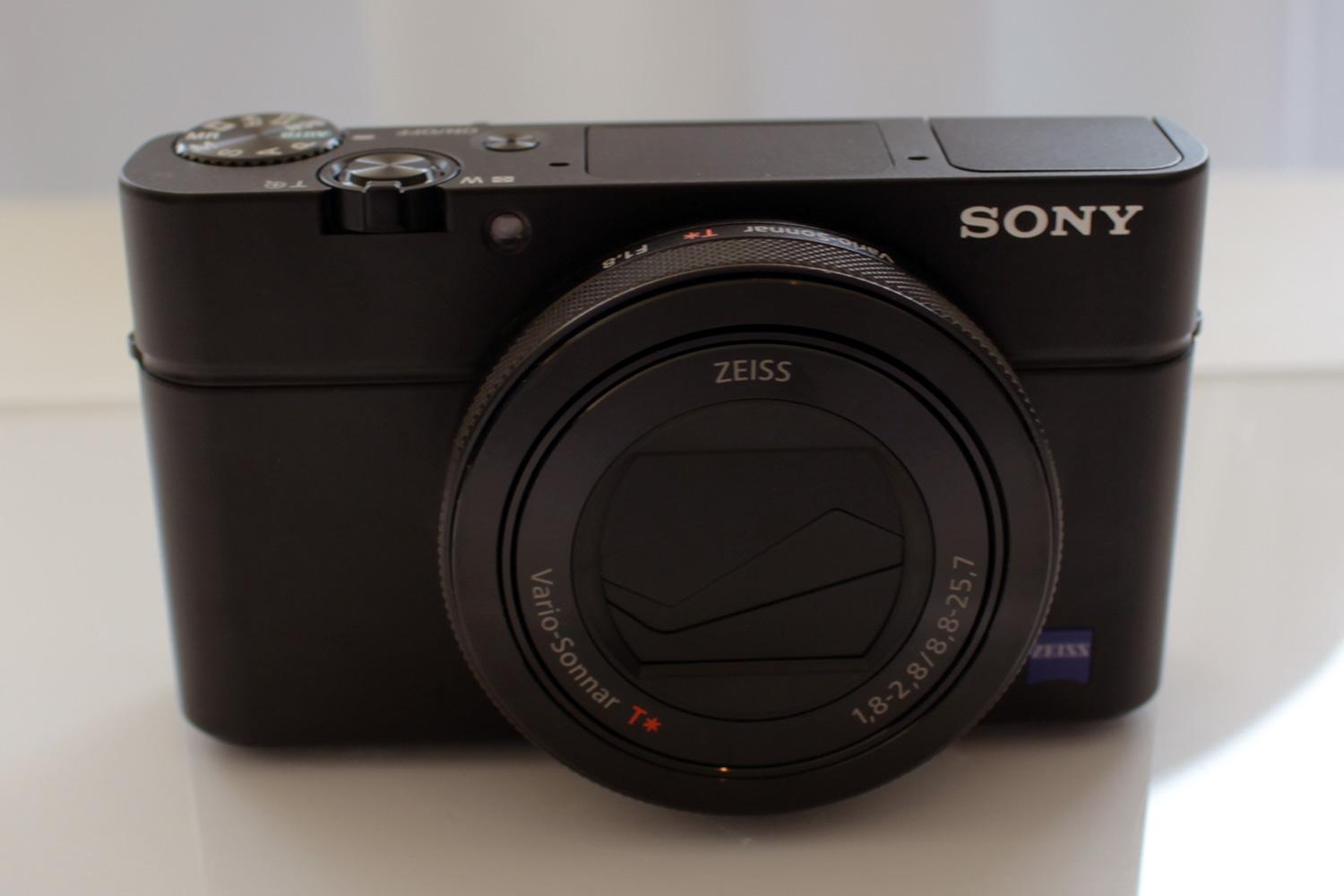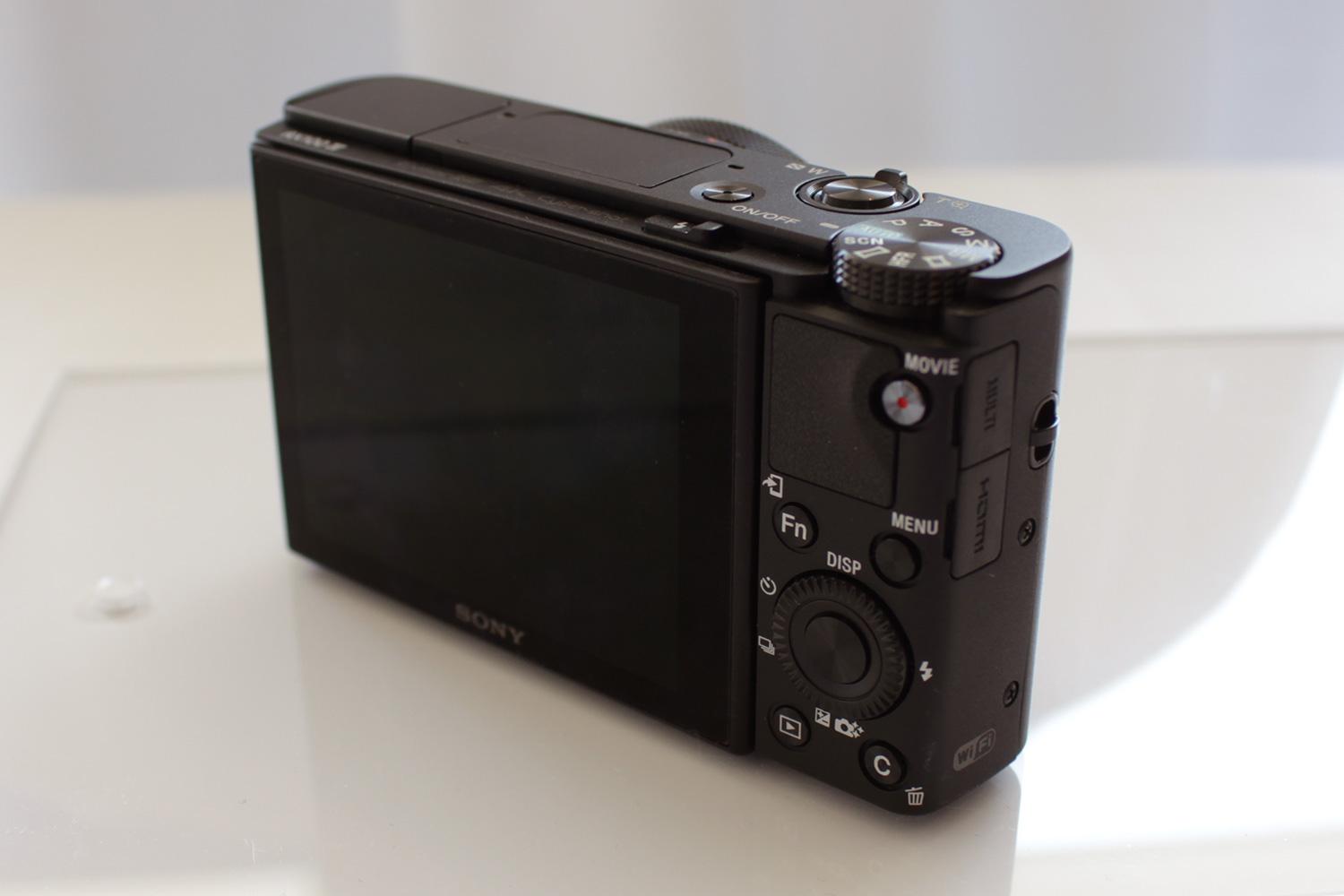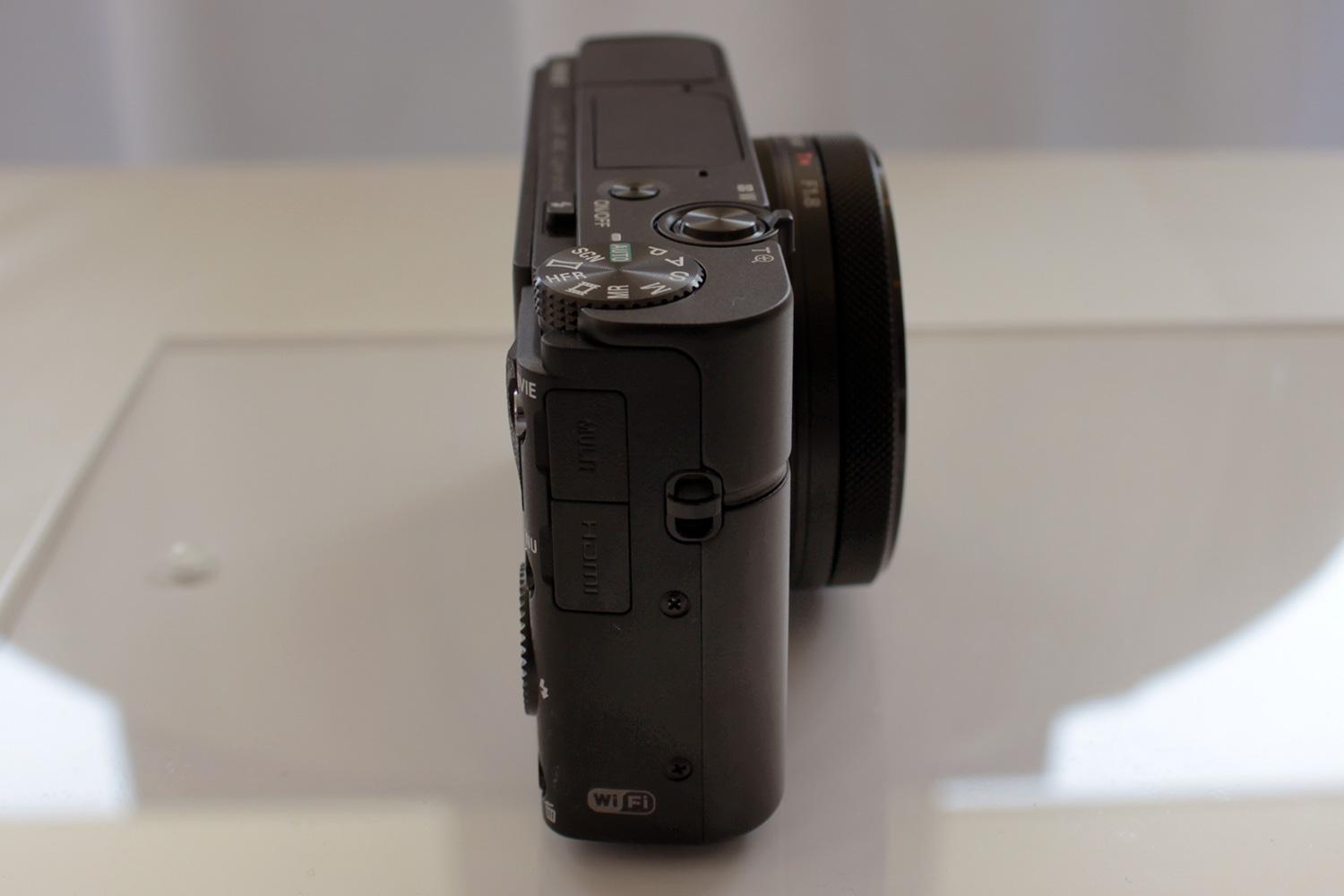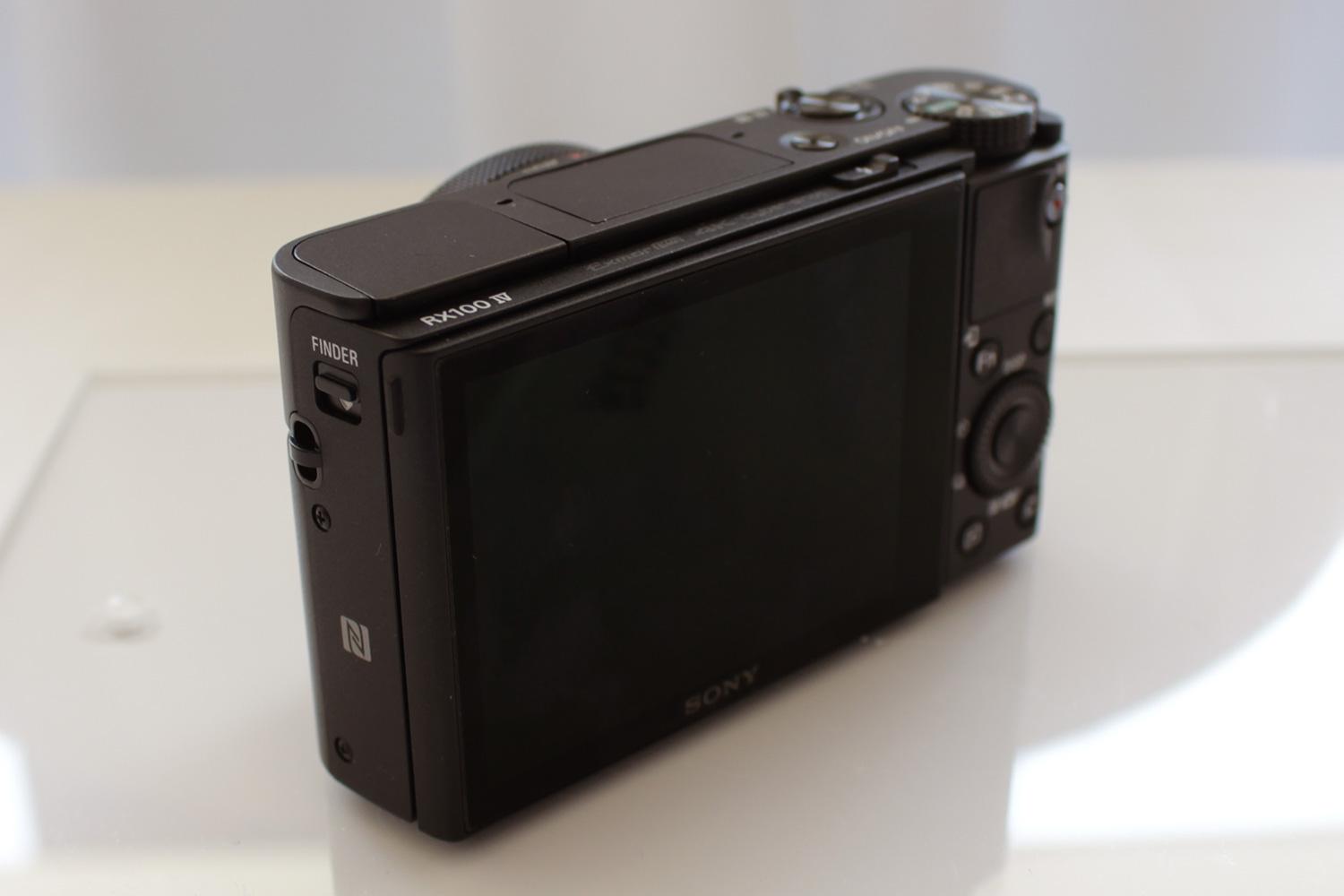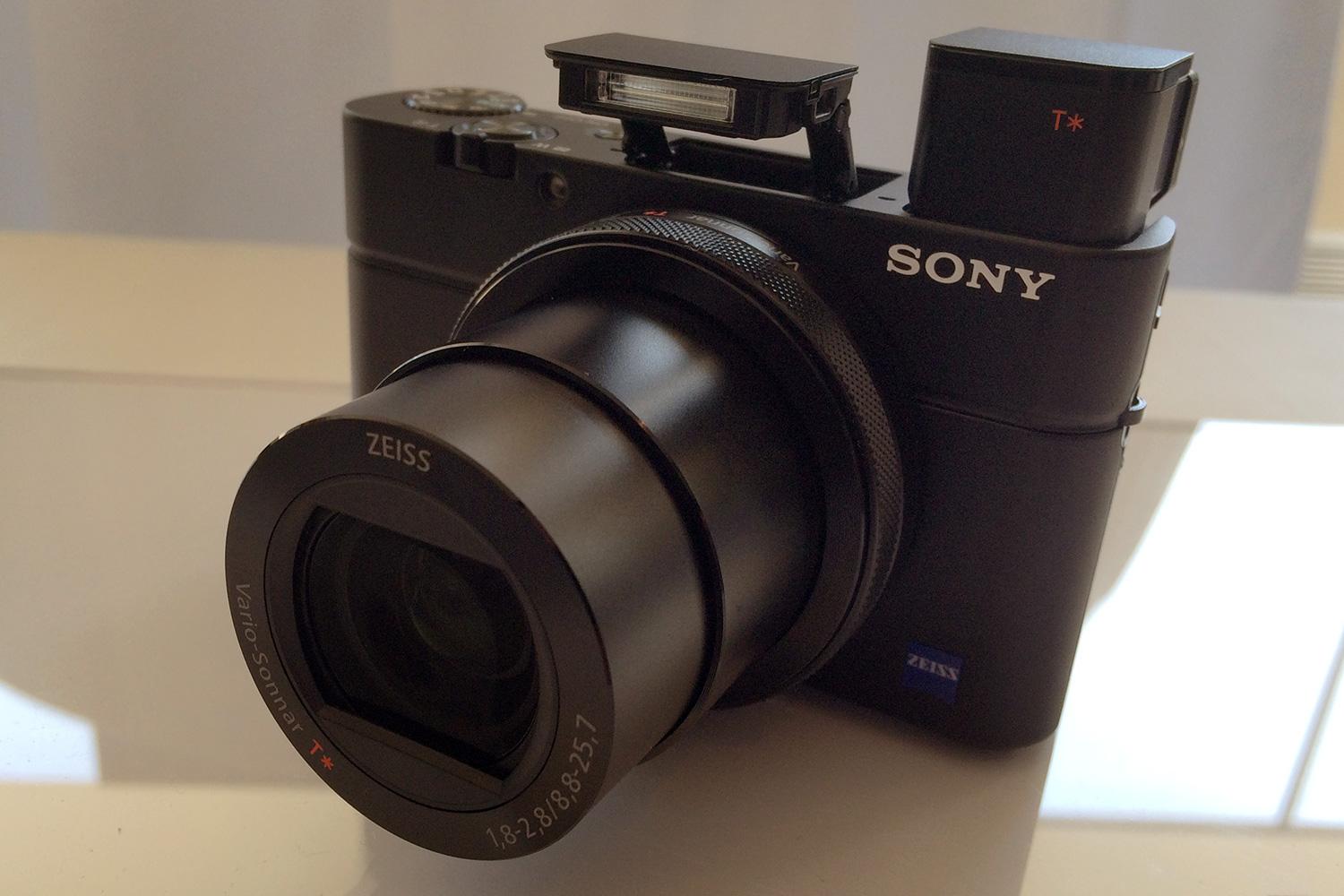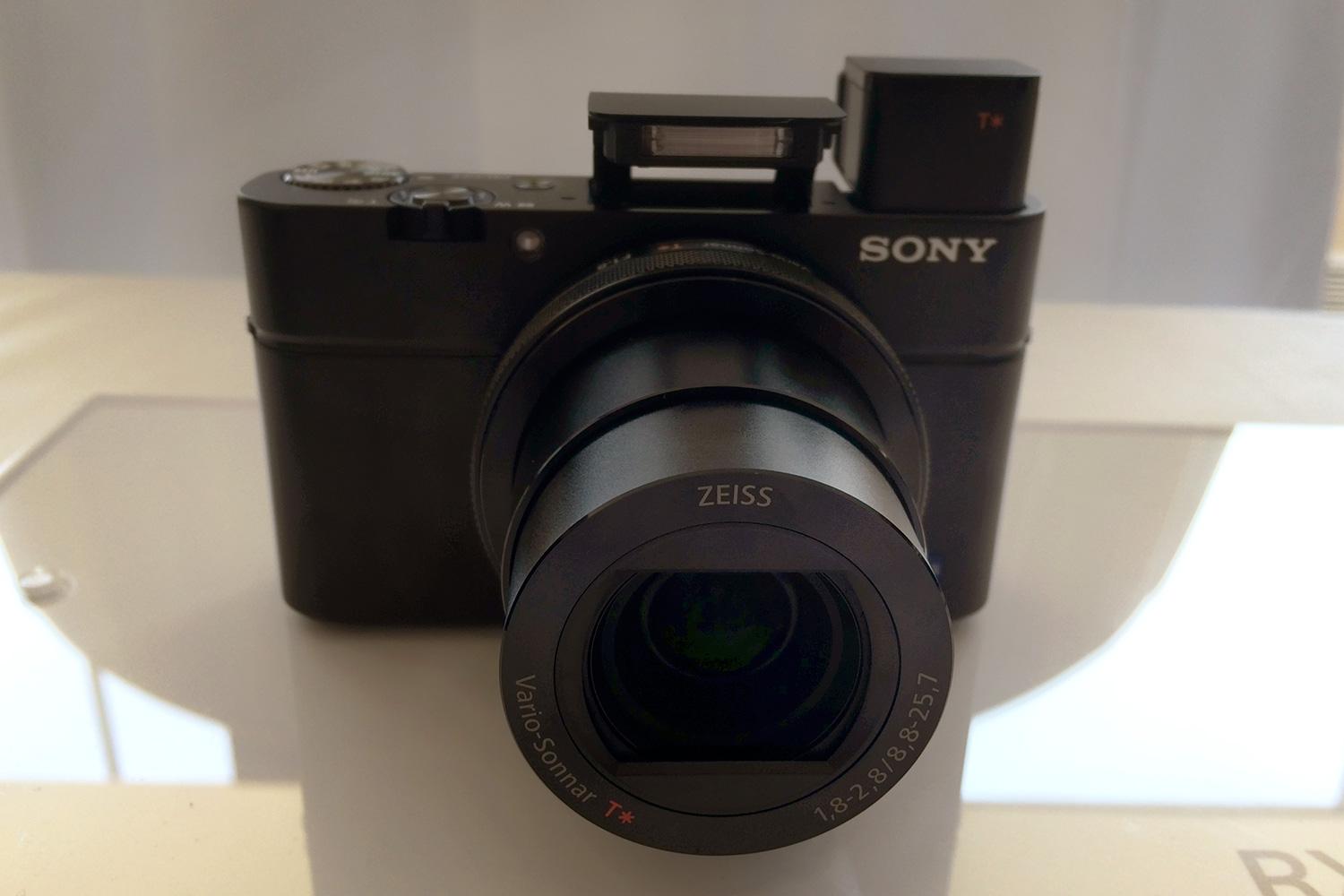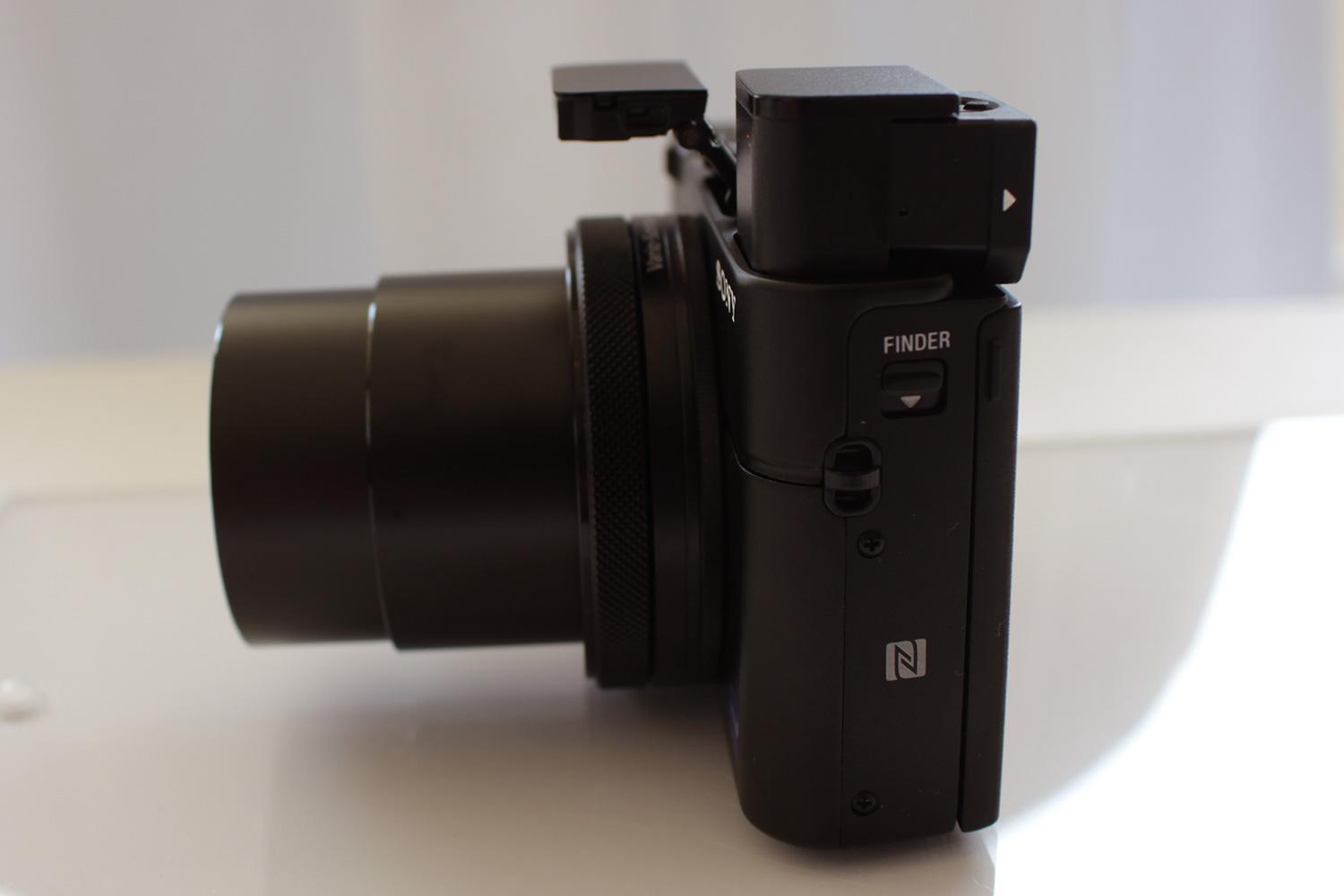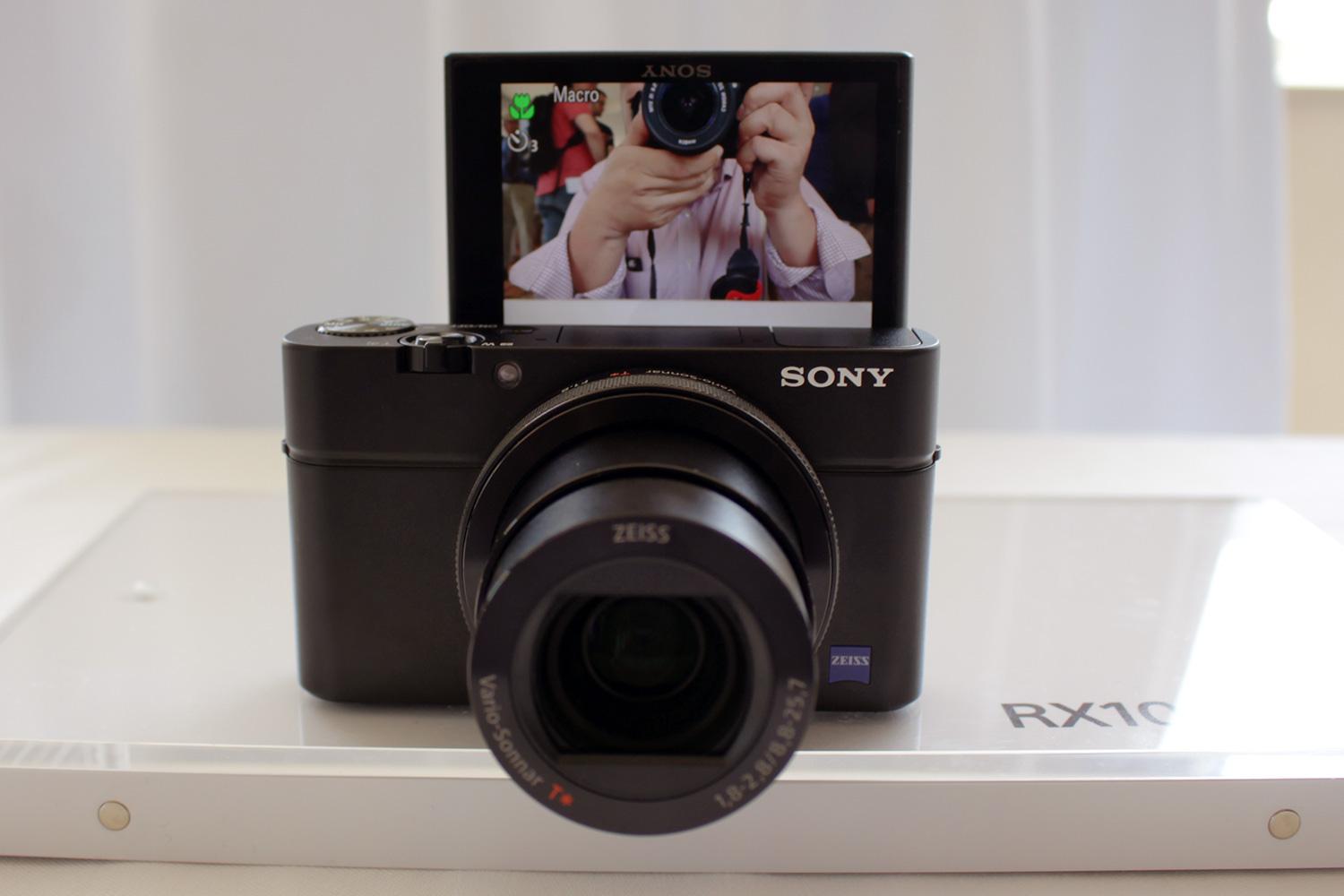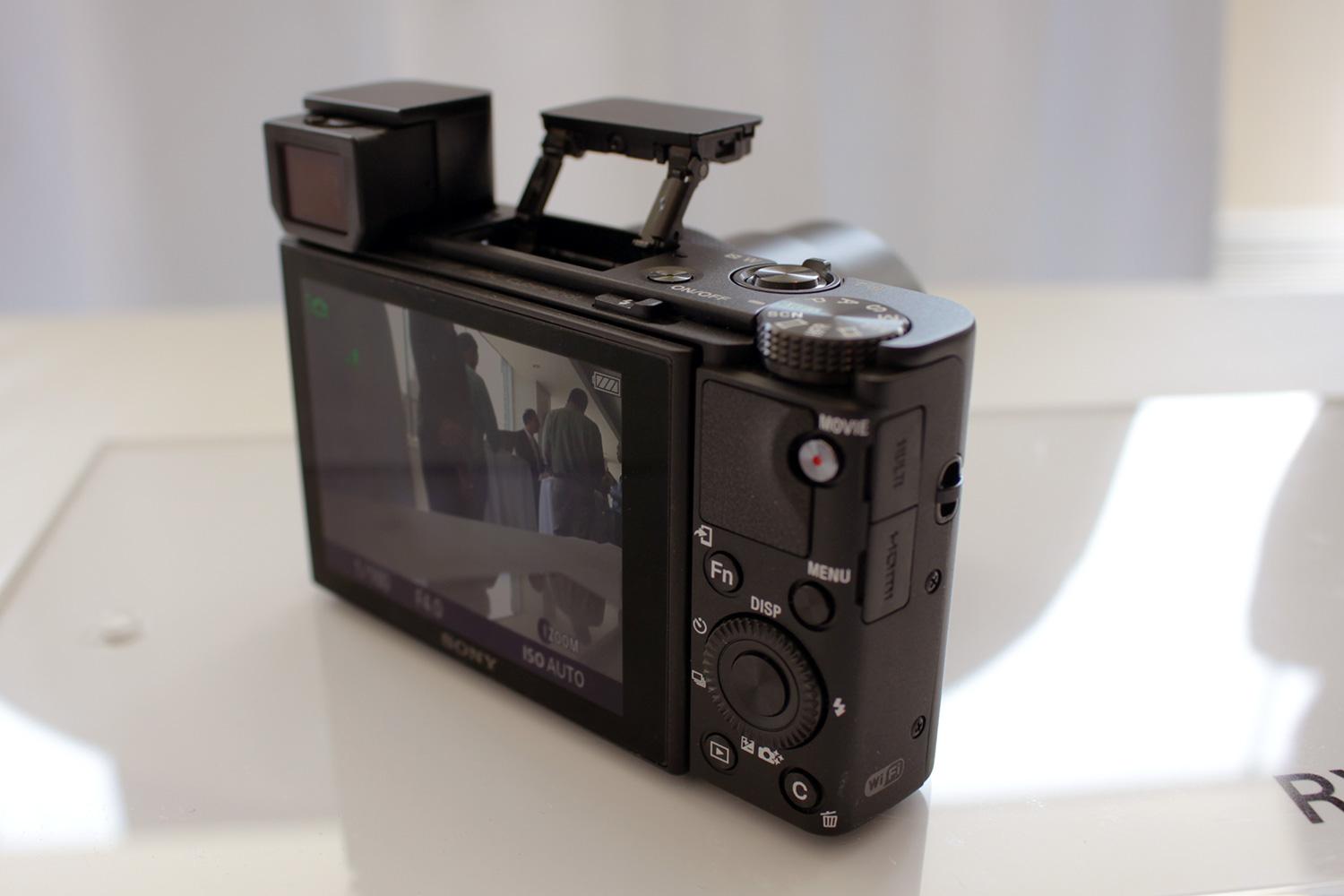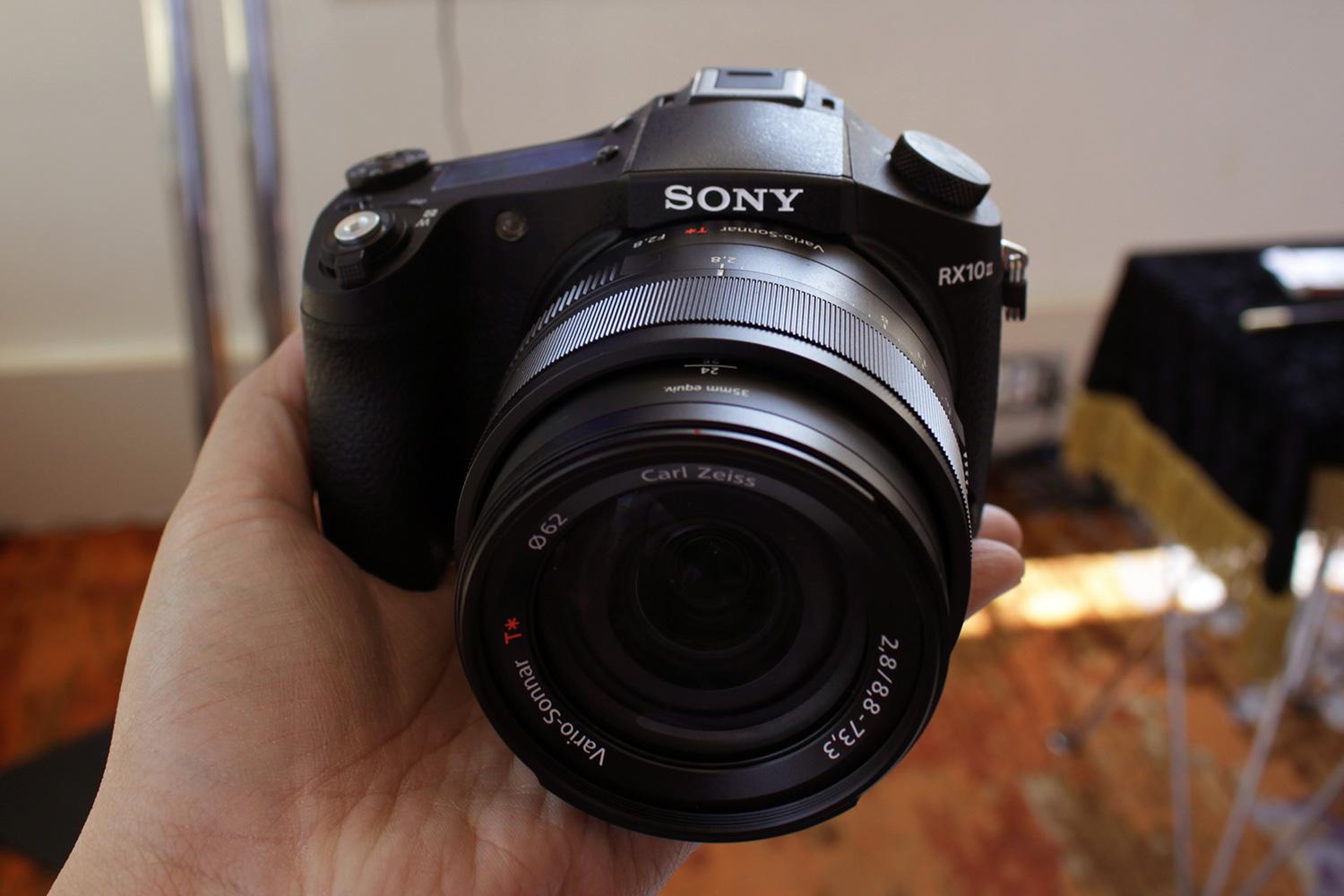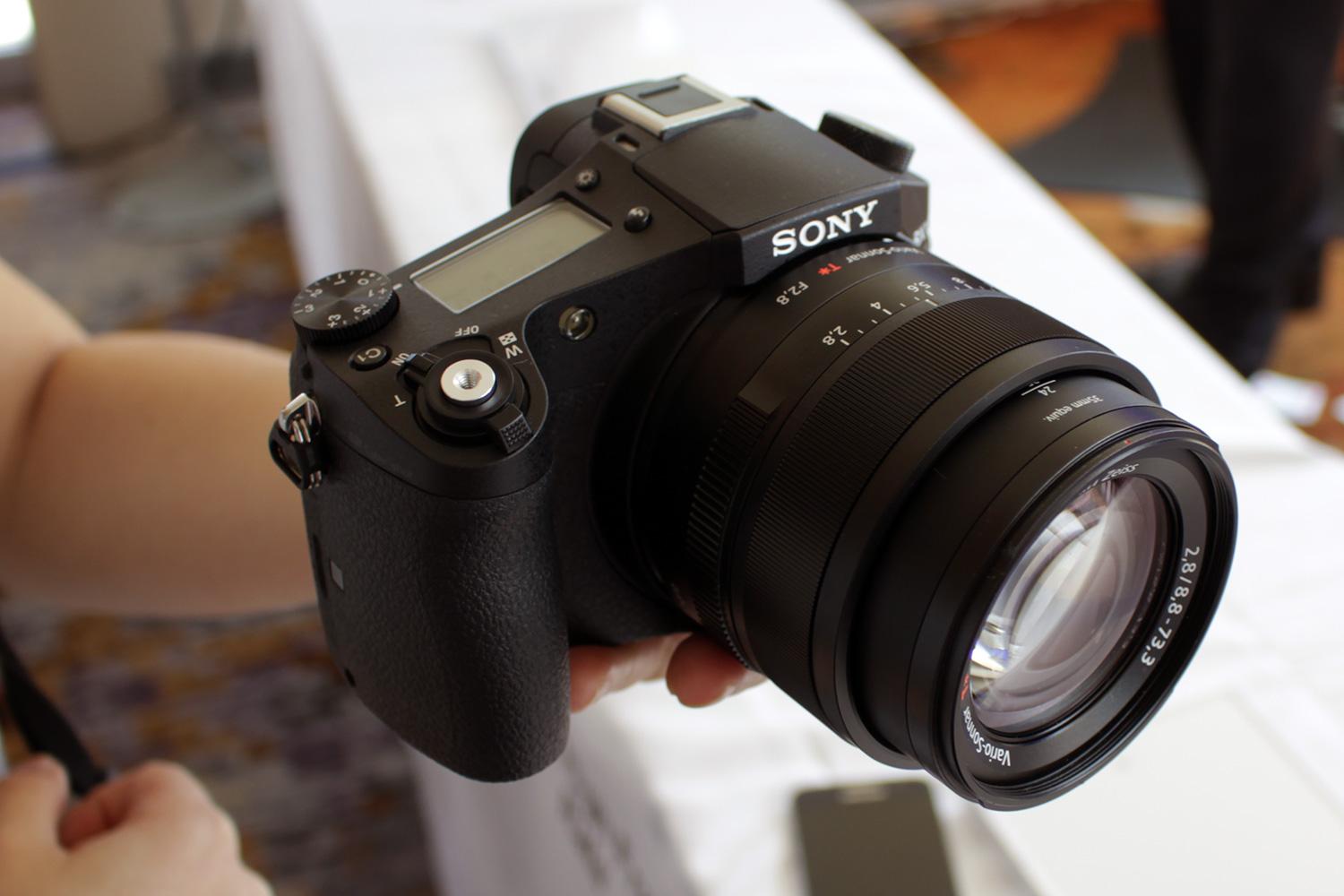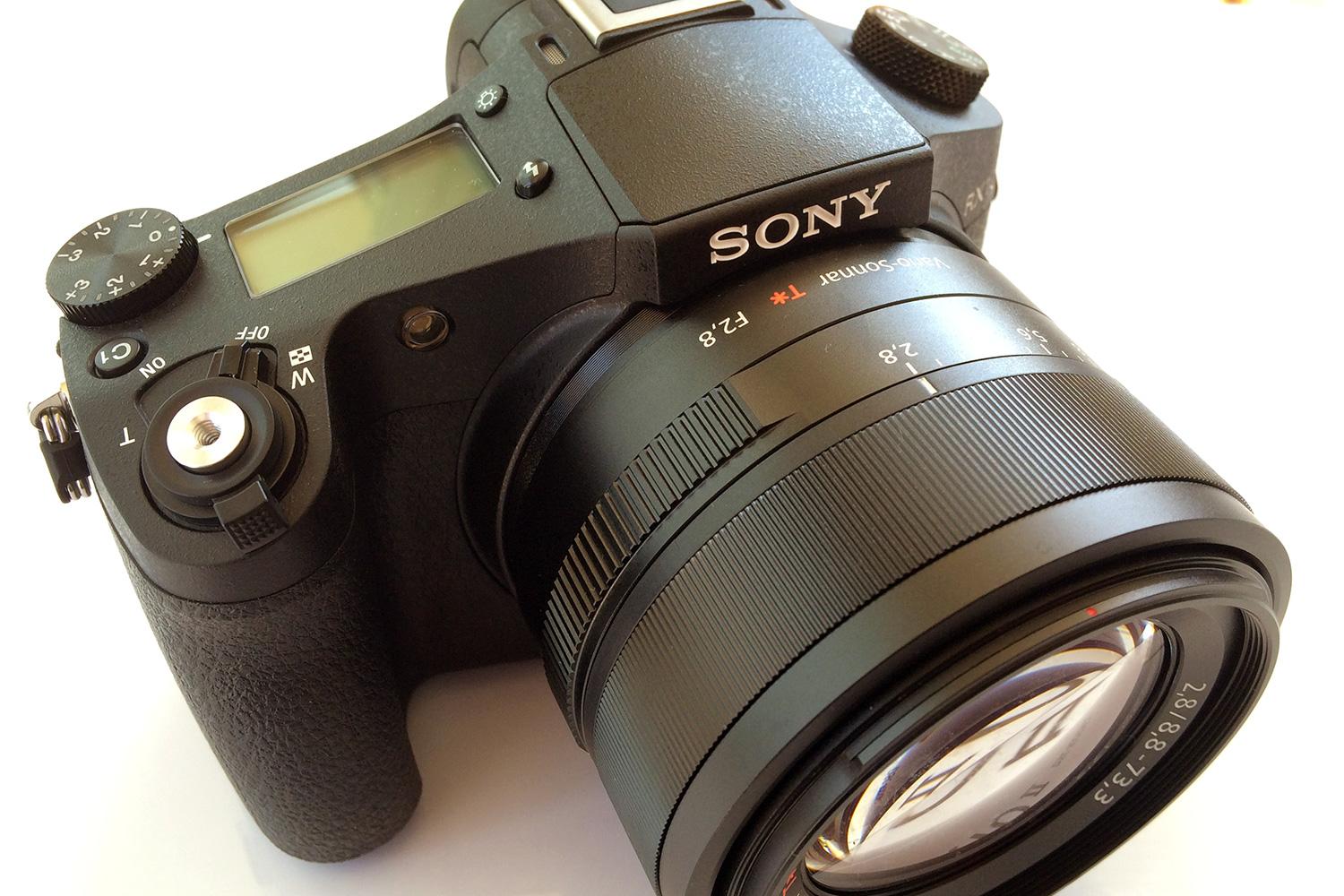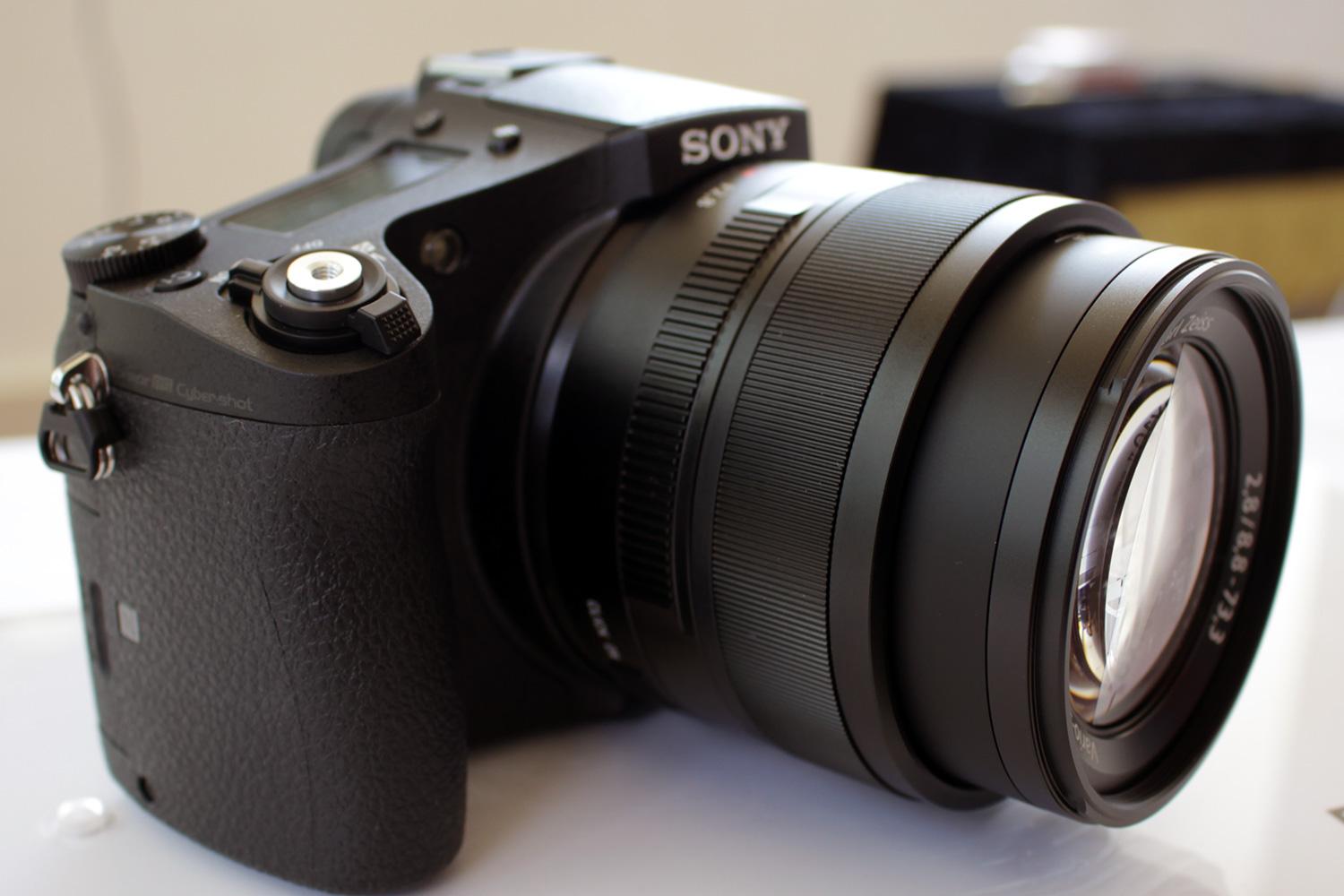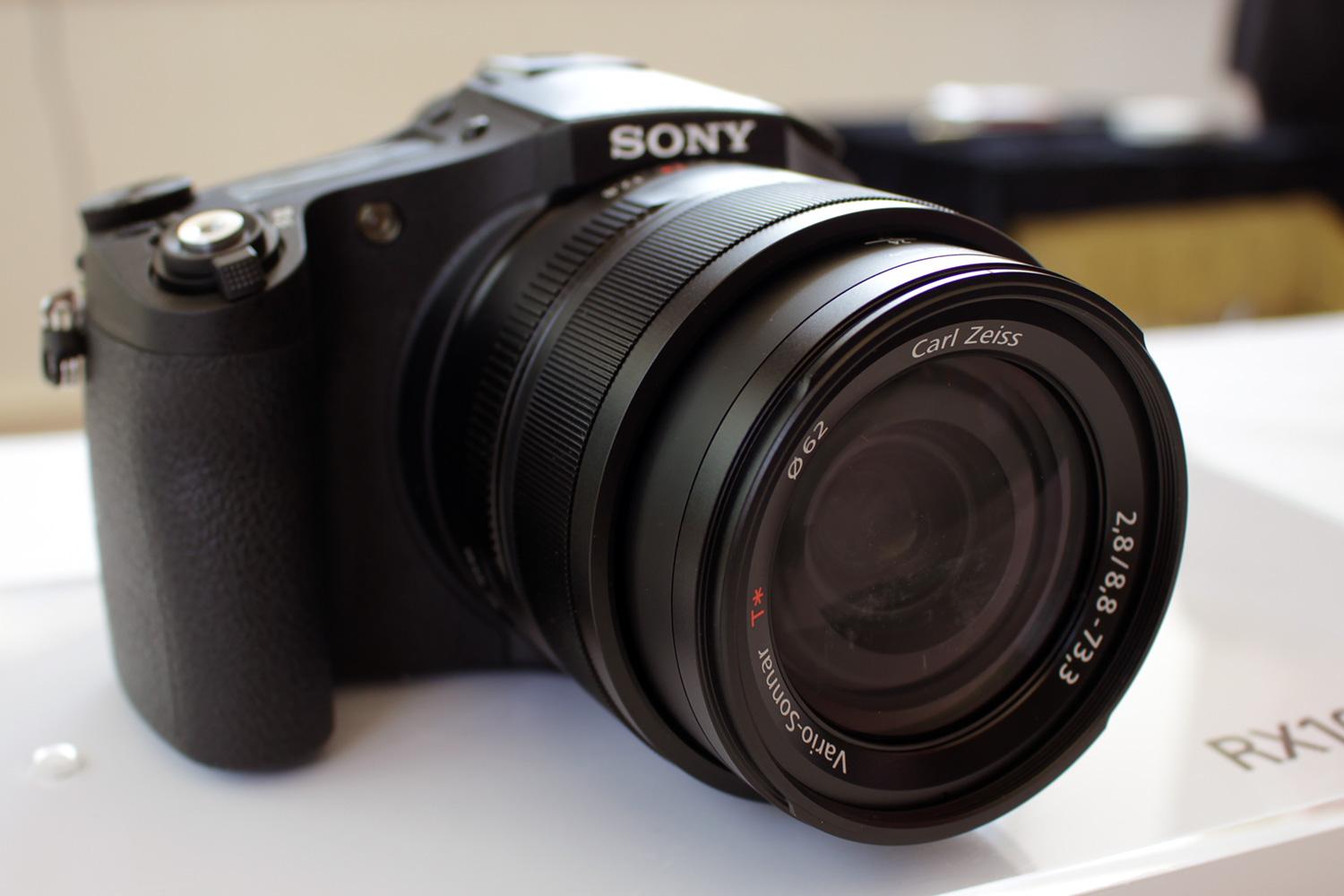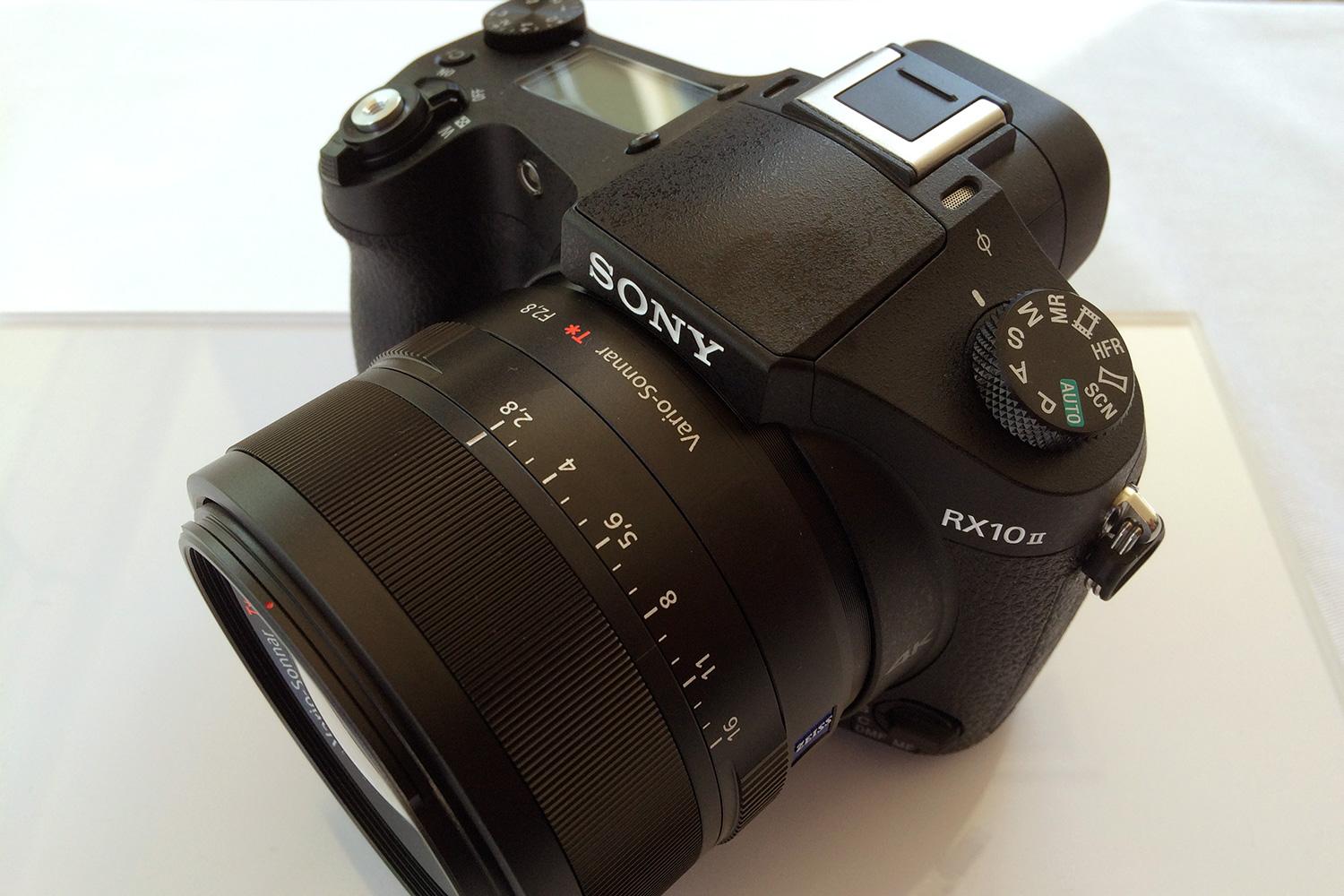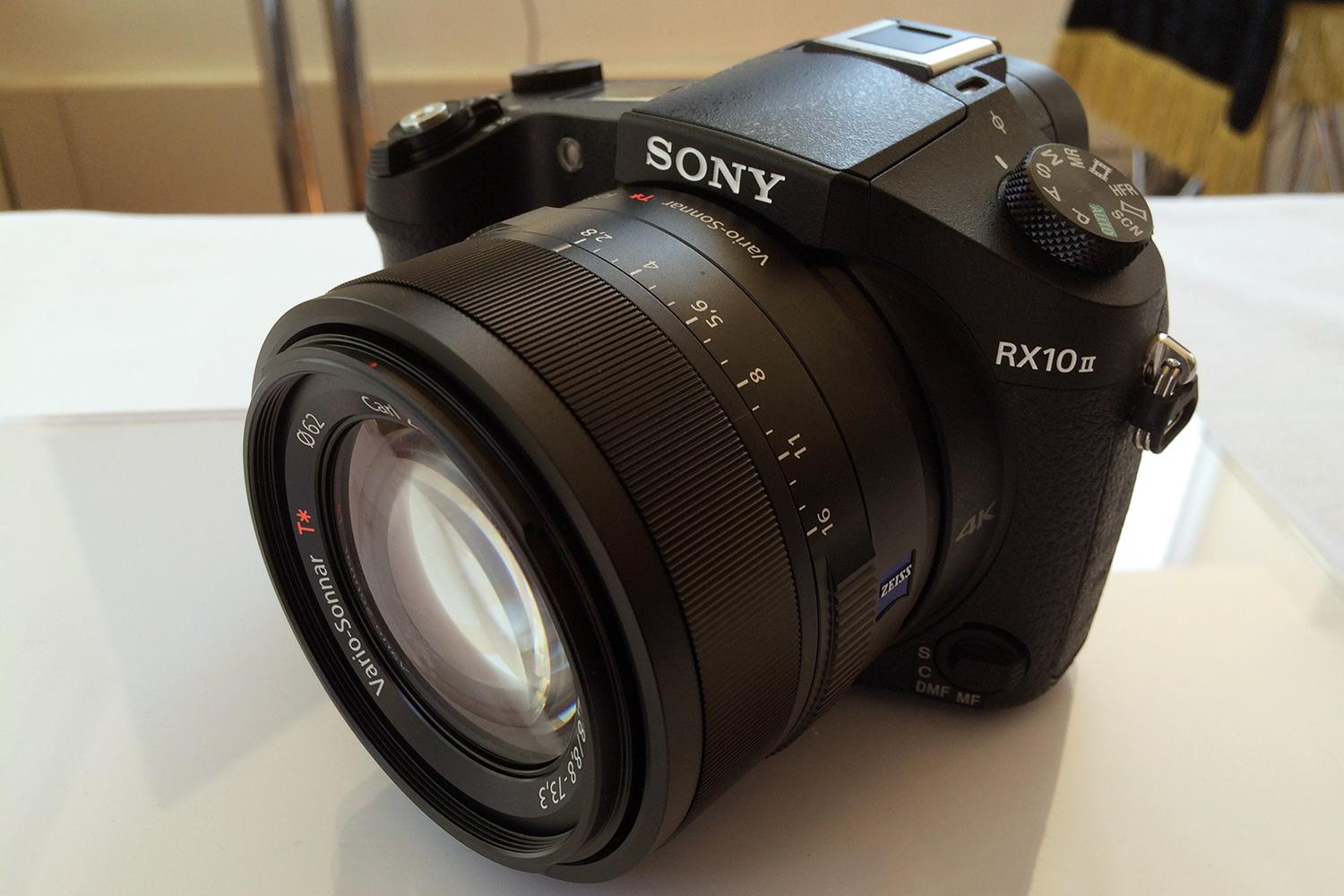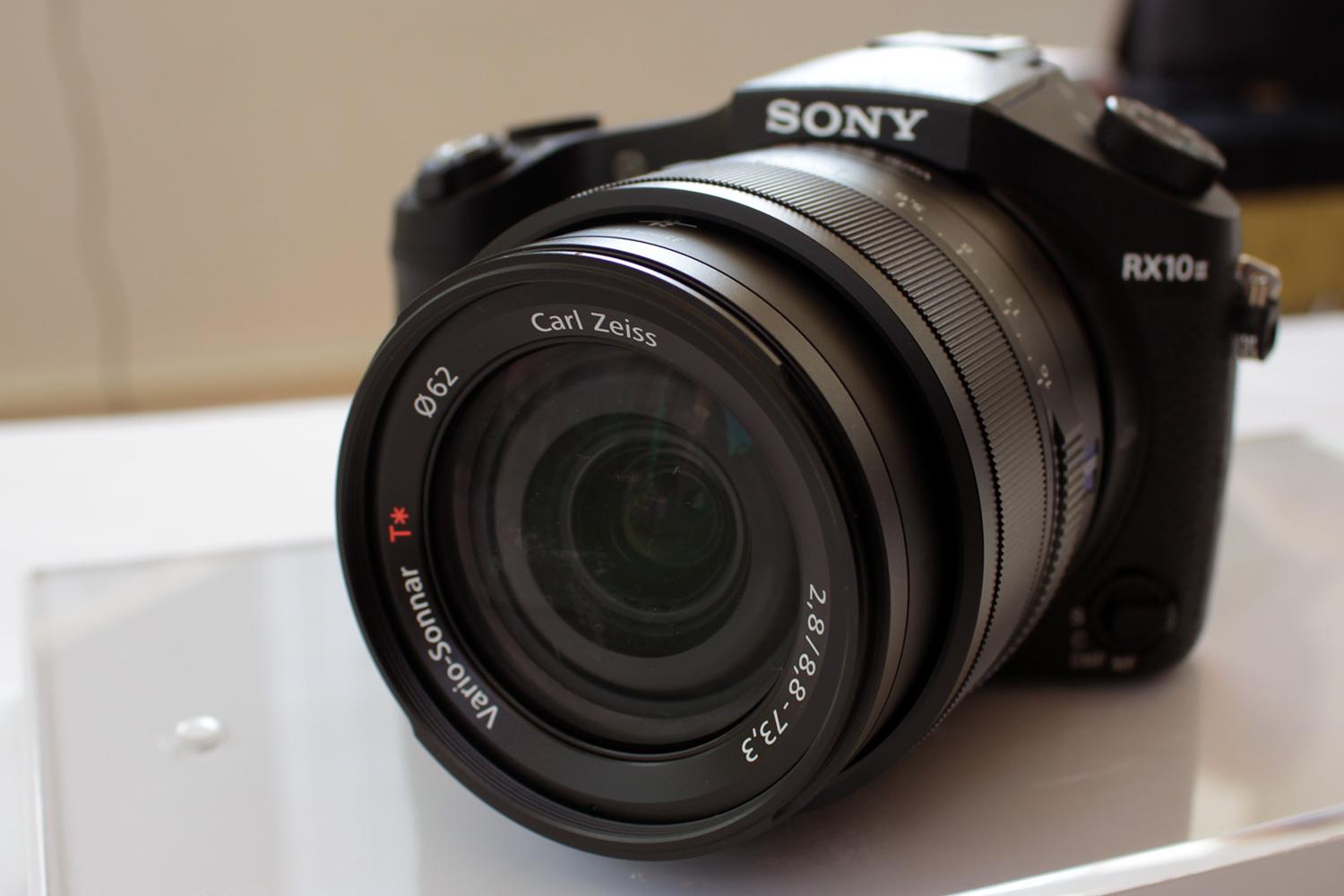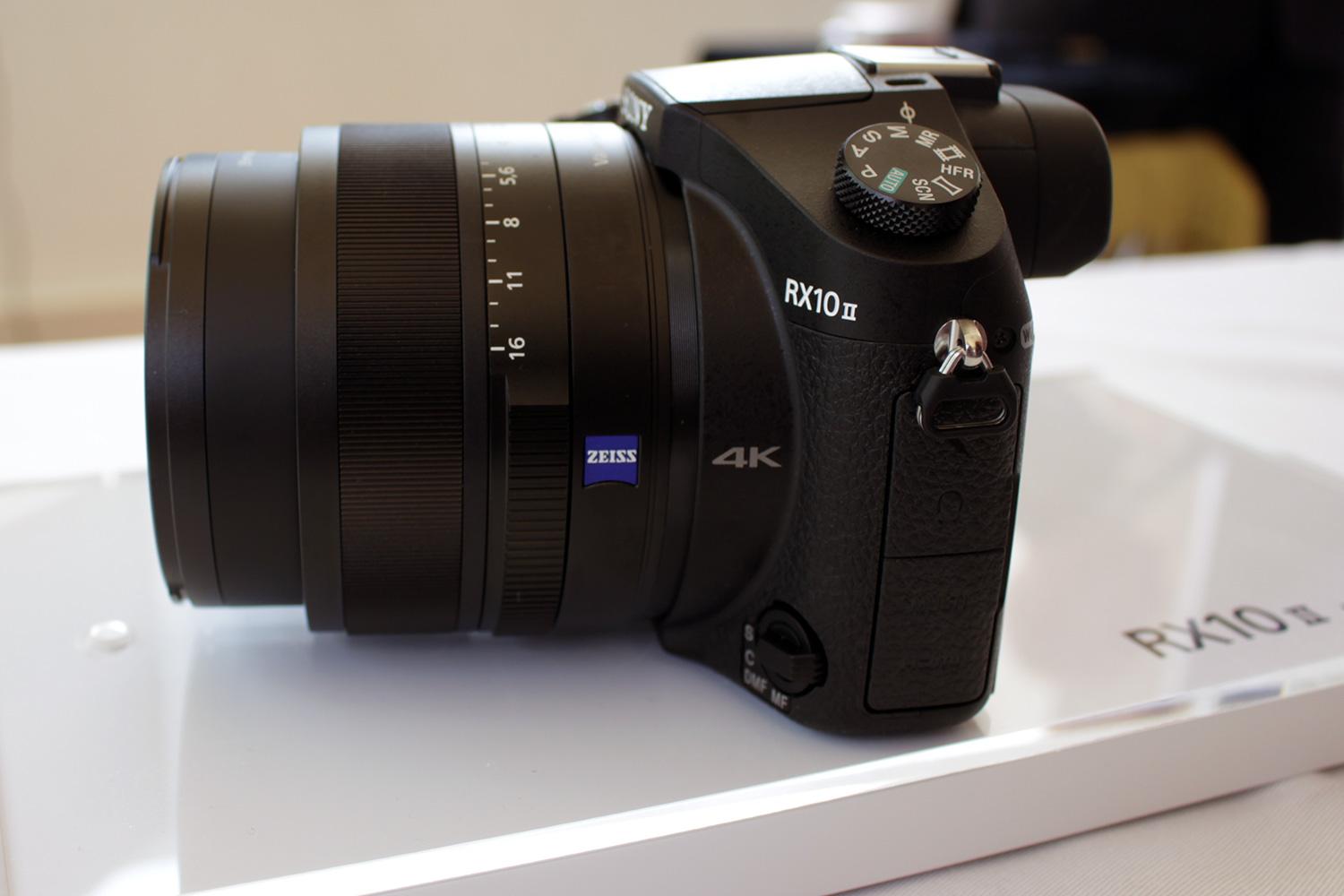The point-and-shoot camera is dead; long live the smartphone. It’s a rhetoric we’ve been hearing for years, and while it’s mostly true in the low end, there continues to be development at the other end of the spectrum. Announced alongside the new A7R II full-frame mirrorless camera, Sony unveiled the pocket-sized Cyber-shot RX100 IV and RX10 II bridge camera – follow-ups to two of our Editors’ Choice models. Both are using a new 1-inch Sony CMOS sensor that’s based on a stacked design – a world’s first – which yields improved image quality and performance.
Cyber-shot RX100 IV
We often refer to Sony’s RX100-series as “pocket rocket” cameras – highly compact shooters that are packed with features and performance. With every new model, Sony seems to achieve the impossible by squeezing in more new things, like an electronic viewfinder in the RX100 III. The new RX100 IV retains the design of its predecessor, but the new components make it an even more powerful camera. It’s also more expensive, costing $1,000 (available in July, pre-sale starts June 17).
The sensor design for the 20.1-megapixel, 1-inch stacked Exmor RS CMOS sensor consists of three layers: the pixel area, signal processing circuit, and DRAM memory (which a typical 1-inch back-illuminated CMOS sensor lacks). The signal processor and DRAM chip – working together, and with the Bionz X image processor – allows for faster readout (more than 5x, versus non-stacked sensors), 40x super-slow-motion at 960 frames per second (fps), a really fast electronic shutter speed of 1/32,000th of a second, and 4K movie capture. The previous RX100s were already impressive point-and-shoots with a large sensor (pocket cameras typically use a smaller sensor), but this new technology could up the performance even further.
Thanks to the new sensor, the RX100 IV is able to capture slow-motion footage that’s far slower than traditional cameras and smartphones. At 960 fps and 24p, a two-second movie clip takes 80 seconds to play back. Besides 960 fps, users can switch to 480 and 240 fps, at 60p, 30p, and 24p. To shoot super-slow-motion, there’s a dedicated mode on the dial; simply press the camera’s “center” button into standby, and press the movie record button to start and stop filming. At a press conference, Sony set up some fast-moving water fountains and brought in a magician doing card tricks. Not only were we able to slow down the stream of water, but the mode also revealed how the magician performed a card trick. (Like all slo-mo videos, no audio is recorded.)
The sensor also improves on shooting fast-moving objects. The RX100 IV has a burst mode of up to 16 fps. The Anti-Distortion Shutter captures “sharp, crystal clear images with a wide open aperture at brightness levels up to EV19.” That means you can focus on an object or subject even when it’s extremely bright. It also eliminates the “rolling shutter” effect that you get when shooting fast-moving objects, like a helicopter propeller, thanks to the performance boost from the new sensor design.
Sony Cyber-shot RX100 IV and RX10 II highlights
- World’s first 1-inch stacked CMOS sensor with DRAM memory chip
- Super-slow-motion up to 960 fps
- Anti-Distortion Shutter with max speed of 1/32,000 per second
- 4K movie recording
In addition, the RX100 IV introduces 4K (ultra-high definition) video capture in a compact Cyber-shot. With full pixel readout of the sensor and without pixel binning (a pre-processing technique), the camera keeps moire and “jaggies” to a minimum. Using Sony’s XAVC S high-bitrate codec, the camera shoots 4K at 100 Mbps and Full HD 1080p at 50 Mbps. Due to limitations, the RX100 IV is only able to record individual 4K clips up to 5 minutes. Unlike the RX10 II (see below), the RX100 IV isn’t designed toward videography, but for consumers who want to shoot a few 4K clips to remember a moment, in ultra-HD. The RX100 IV has Picture Profile, S-Log2/S-Gamut, and other advanced functions. You can also capture 16.8-megapixel stills while shooting 4K videos.
Otherwise, the RX100 IV retains features from the RX100 III, like the 3x Zeiss Vario-Sonnar T 24-70mm (35mm equivalent) f/1.8-2.8 lens and retractable OLED EVF. Sony says the camera has an upgraded Fast Intelligent AF system that can track a moving object as fast as 0.09 seconds (measured using the RX10 II). From our casual hands-on, we found the AF to be really fast. There’s also Wi-Fi and NFC, which, from our experience, work great.
Like previous RX100 models, the RX100 IV will remain a niche product, considering the price. For a pocket camera, the RX100 IV looks to be another stupendous offering from Sony, but, considering it’s more expensive than some DSLR and mirrorless cameras, the it’ll be for a few. Still, it’s an impressive little camera for anyone who can afford it.
Cyber-shot RX10 II
The next version of Sony’s high-end, video-centric bridge camera, the 20.2-megapixel RX10 II uses the same new technologies as the RX100 IV, but with differences, naturally. It’s a much larger camera, but you get a more powerful 8.3x zoom Zeiss Vario-Sonnar T lens 24-200mm, 35mm equivalent) with a constant f/2.8 aperture. As for 4K video, the RX10 II can shoot clips up to 29 minutes long, and there are various ports and features designed for videographers. It has a dust- and moisture-resistant body, but otherwise, it looks and feels like its predecessor.
Also available in July with pre-sales starting on June 17, the RX10 II will have a list price of $1,300.
While both cameras are expensive (although rightly so, with the new technologies employed) and won’t achieve mass adoption like iPhones, we think they are really showcase pieces for Sony’s technology. At a press meeting where the cameras were unveiled, Sony Electronics President and COO Mike Fasulo started the presentation by reminding us that Sony is the largest maker of imaging sensors. While stacked sensors aren’t new (Sony says the technology is used in smartphone imaging sensors), it’s the first time it’s been introduced in a 1-inch size. If the technology is as good as Sony claims, the company could make more money selling the sensor, than the cameras themselves.
